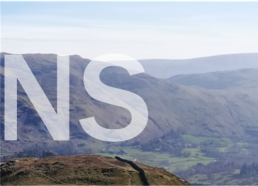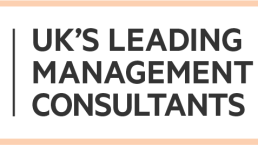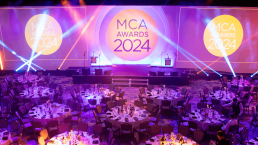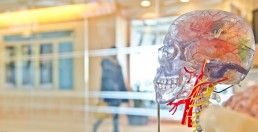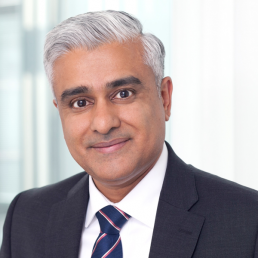Managing Consultant
MANAGING CONSULTANT
- Deliver transformative results for high-profile clients
- Collaborate with a team that values innovation, inclusivity, and excellence
- Benefit from a supportive environment that prioritizes professional growth
- Play a key role in shaping the consultancy’s future and reputation in the market
HOW YOU'LL MAKE AN IMPACT
Deliver Measurable Project Outcomes:
- Lead the end-to-end delivery of consulting projects, ensuring objectives are met and results are clearly quantified
- Develop and implement actionable plans and strategic roadmaps tailored to client challenges
- Ensure projects achieve agreed-upon KPIs and deliverables, driving tangible improvements for clients
Build & Strengthen Client Relationships:
- Establish & maintain trusted partnerships with senior stakeholders, ensuring alignment on project goals
- Deliver data-driven insights and evidence based recommendations that secure stakeholder buy-in
- Co-develop business cases and execution frameworks to achieve measurable business improvements
Drive Business Growth:
- Identify opportunities to expand client relationships and generate new business within existing and potential markets
- Contribute to the development of innovative service offerings that address market demands
- Prepare and deliver compelling proposals and presentations that outline clear value propositions
Develop & Manage Teams:
- Provide guidance and mentorship to team members, helping them deliver high-quality results
- Foster a collaborative and inclusive environment that promotes learning and growth
- Act as a role model, demonstrating a results-focused and client-oriented mindset
Advance excellence within our firm:
- Lead internal initiatives to refine methodologies and enhance tools, ensuring the firm’s offerings remain cutting-edge
- Publish thought leadership content and represent the firm at industry events to strengthen its market presence
- Support the firm’s strategic goals by driving improvements in operational effectiveness and client satisfaction
ABOUT YOU
- At least 6 years of experience in a management consultancy environment, with a proven track record of hands-on delivery
- Expertise in managing projects that achieve significant business outcomes, including operational efficiencies and revenue growth
- Demonstrated success in building and maintaining client relationships with organisations exceeding £100M turnover
- Proven sales/commercial management in a B2B industry context
- Able to work on client sites across the UK (or abroad) and our London office
STAND OUT EXPERTISE
- Experience in more than one sector and of keen interest is manufacturing, aerospace/defence, automotive, engineering, supply chain operations management, utilities
- Proficiency in Data Analysis Tools (e.g., Excel, Python, SQL)
What next? To apply, please complete the details below and attach your CV
Curzon Consulting partner is Category Judge for 2020 Soldiering On Awards
2020 Soldiering On Awards
Curzon Consulting Partner, Douglas Badham, is proud to be a Category Judge for 2020 Soldiering On Awards.
The Soldiering On Awards highlights the outstanding achievements of current and former service men and women, their families and those who support the Armed Forces Community. Now in their tenth year, the awards recognise inspirational people for achievements in education, healthcare, communities, diversity and inclusion, and business.
Douglas Badham said:
“I am an ardent supporter – for ten years these awards have shone a light on inspirational stories of immense challenges overcome, and stunning personal and business achievements”
Following a record-breaking number of nominations, the first round of judging has been carried out by the Category Judges.
Lt. Col. Ren Kapur MBE, Founder and CEO of X-Forces Enterprise CIC and Co-chair of the Soldiering On Awards said:
“In what has been a record-breaking year for the number of nominations received, my thanks go to our category judges for the diligence and dedication they have applied to this important step on the path to decide who will be the 2020 SOA Finalists.”
Awards timeline
There is one more stage to go, the final independent panel review at the end of November 2019, before Finalists are announced in early 2020.
The awards take place on 24 April 2020.
For more information
About the author
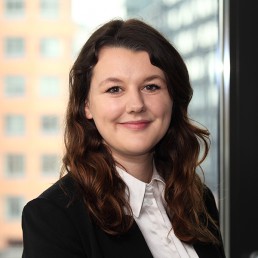
CONTACT US TO FIND OUT HOW WE CAN HELP
Mobile stroke units - a stroke management study
Curzon Healthcare lead Chetan Trivedi has just completed an extensive study of Mobile Stroke Units (MSUs) in Australia, Argentina, Canada, Germany, Norway and the United States of America.
Our study included a detailed review of the efficacy of stroke management solutions, including the impact on economic and social costs downstream. We have also performed a detailed assessment of people, process and technology required to implement such solutions in other countries. Whilst our example shared below is focused on the UAE, a MSU can be implemented by any health system.
By adopting a Mobile Stroke Unit model, a health system can increase stroke survival rates, reduce disabilities and optimise the associated economic and social cost of care for stroke survivors through drastically decreasing “alarm-to-scan” and “scan-to-treatment” times.
Given our extensive intellectual capital (research and analysis) on the topic, we are able to develop a high-level business case within a few weeks for a local, regional or national health system.
Opportunity to Revolutionise Stroke Management in United Arab Emirates
By adopting a Mobile Stroke Unit (MSU) model, the UAE can increase stroke survival rates, reduce disabilities and optimise the associated economic and social cost of care for stroke survivors through drastically decreasing “alarm-to-scan” and “scan-to-treatment” times.
1. Situation
- There are two key types of stroke: ischemic and haemorrhagic
- Globally, ischemic stroke is the most common, occurring 85% of the time; but whilst haemorrhagic strokes only occur 15% of the time, they are responsible for 40% of deaths
- In the UAE, stroke is the third leading cause of death – “10,000 people suffer from stroke… every year”
- Stroke is the “number one cause of disability” – with only “10% of victims reaching a hospital on time to make a full recovery”
- Stroke “is estimated to cost the UAE around AED 3 billion per year, with additional cost to the economy of a further AED 4 billon in lost productivity, disability and informal care”
- The UAE had no stroke units in 2014 versus 12 in 2019, which is a major step in the right direction
- “The average age of occurrence of stroke is 45 in UAE which is much lower than the world age of 60 years”
Stroke is a major problem for health systems
2. Complication
- 2,000,000 brain cells/ neurons are lost every minute after a stroke, which translates to “Time is Brain”
- The earlier the stroke patient is diagnosed and treated, the better the patient outcomes, leading to a significant reduction in total cost of treating the patient over the life of their associated disabilities
Typical traditional model for stroke treatment is:
- Patient transported via ambulance into Accident & Emergency (A&E) or a specialist stroke unit
- Type of stroke determined by CT scan (a stroke patient cannot be treated until the type of stroke is determined)
- Treatment is administered based on stroke type (ischemic and haemorrhagic)
Through-out the entire process (from acute symptom onset to treatment), significant time is lost, which results in higher mortality risk and additional complications downstream
Correct diagnosis and time to treatment is crucial
3. Question
Despite great progress made in stroke intervention in the UAE in recent times, what can the UAE do to deliver transformative change to increase post stroke survival rates, reduce disabilities associated with stroke, improve patient quality of life post stroke and reduce the associated economic burden on the stroke patient, their family and wider society?
4. Solution
- Instead of patients being transported to A&E or a specialist Stroke Unit, losing valuable time, a specialist Mobile Stroke Unit (MSU) can travel to the patient to deliver emergency point-of-care diagnosis and treatment onsite
- The Mobile Stroke Unit solution was pioneered in Germany back in 2011 and such solutions are being delivered in Australia, Argentina, Canada, Germany, Norway and the US
Key Mobile Stroke Unit attributes typically include:
- appropriately trained emergency response team (e.g. driver, paramedic, critical care nurse and CT technician, optional Vascular Neurologist)
- a Computerized Tomography (CT) scanner
- a point-of-care laboratory system (e.g., serum sodium, potassium, chloride, ionized calcium, total CO2, glucose, etc.)
- a telehealth solution, where a Vascular Neurologist and Pharmacist can video call into the Ambulance to provide guidance to the paramedic team
- an Artificial Intelligence solution to provide on-site diagnosis to rule out stroke-like symptoms (e.g. migraines, seizures, Bells Palsy, inner ear problems etc.), which may not be related to stroke
The most important benefit of the Mobile Stroke Unit is rapid diagnosis of the stroke type and treatment with intravenous tissue plasminogen activator (TPA) can be started more rapidly if appropriate
A randomised controlled trial shows, treatment with Intravenous TPA can be started within an average of 38 minutes when patients are treated in an Mobile Stroke Unit compared with 73 minutes under the existing model
Evidence shows on-site stroke treatment improves patient outcomes
Source:
https://www.stroke.org/understand-stroke/what-is-stroke/hemorrhagic-stroke/; The Epidemiology of Stroke in the Middle East, El-Jha et al 2016; https://www.arabhealthonline.com/magazine/en/latest-issue/2019-show-issue/mechanical-thrombectomy-for-acute-ischaemic-stroke-in-uae.html; The mobile stroke unit and management of acute stroke in rural settings, Shuaib and Terakihi 2018; https://gulfnews.com/uae/health/know-the-signs-of-a-stroke-and-where-to-get-help-1.65494094; Curzon Consulting analysis

